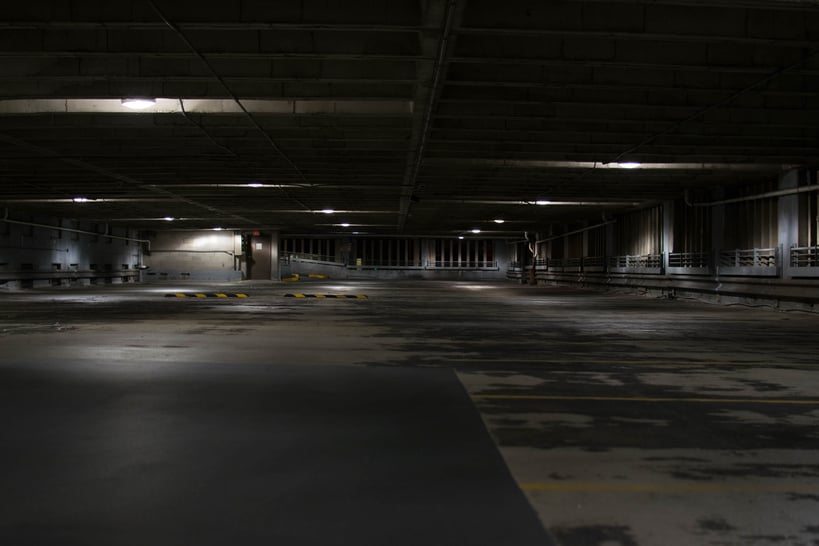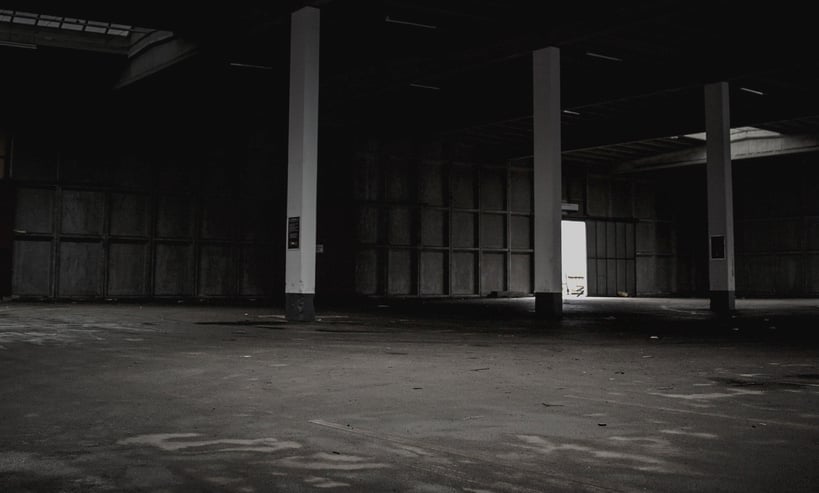Concrete used in making garage floors is a very strong material. It can always withstand considerable levels of stress.
It also has a low maintenance cost, but then it is not 100 percent perfect. It comes with specific problems that if you fail to address on time could be difficult to rectify and manage.
Three significant elements can affect the quality of your concrete garage floor. These include; spalling or scaling, cracks, and dusting. We explain them in details below.
Spalling or Scaling
Scaling on a concrete surface like garage floor is usually characterized by white flaky patches on the concrete surface. On the baseline, it may be due to a cosmetic problem or worse of be caused by structural damage.
It may not be easy to determine the real cause of scaling on a garage floor. It may also be due to structural issues and you'll need to be keen with your inspection to recognize this. When it occurs, chances are high more damages might follow on the concrete surface.
Dusting
Dusting is characterized by subtle layers of dust spots on the garage floor. It usually happens when the concrete particles used on the floor fails to mix with the other materials well.
It is more likely to happen when too much water was used in the mixture, or the amount of cement used in preparing the mixture was very low. This problem is most likely to be observed on high traffic sections on the floor.
Two main things can be done to avoid dusting; ensure your water, aggregate and cement mixture is correct and allow the cement sufficient time to cure after installing it.
Cracks
Cracks are some of the most common and easy to recognize the causes of damage on garage floors. As is the case with most materials, concrete tends to expand and contract depending on the changes in temperatures.
If the changes in temperatures are extreme, the concrete may begin to crack. Cracks on a concrete garage floor may also be caused by a structural problem, especially if the ground underneath the surface is not regular.
Cracks are some of the easiest to repair damages on the concrete surface: Most of it just happens on the surface. However, you must not ignore them as simple damages because sometimes the 'simple' cracks are emanating from more profound structural complications. The basic rule of thumb before opting for any repair option is first to assess the damage and determine the cause so you can fully repair it and avoid similar problems in future.


How to Determine When Garage Floor needs to be restored?
Garage floor restoration is the activity of repairing or upgrading damaged or old concrete. It helps ensure that the garage floor is restored to the original appearance.
You should, however, note that the process of restoring garage floor slightly differs with garage floor repair. If you're working on a garage floor repair, your work will be primarily limited to just fixing possible structural problems on the floor.
When it comes to restoration, though, you will not only fix the structural issues but also focus on the floor's aesthetic features. One of the primary equipment that you will need during a garage floor restoration project is a concrete floor grinder like the OF30Pro | Multi-Surface Concrete Floor Grinder and Polisher.
Depending on the job specifics, you may need special grinding toolings, for example, Resin Diamonds if you will also need to polish the surface and give it a higher shine. Now there are also instances when a client may not really know whether garage floor restoration could be preferred to garage floor repair.
In such cases, your recommendation will always be subject to what you believe is best for the floor. When choosing whether to repair or restore the floor, you'll analyze the extent of damage on a case by case basis.
The first question you will need to ask yourself for example, would be; "is it possible for me to fully restore this floor to the original integrity?" Importantly, the extent of damage on this floor should be your guide. If the damage is due to scaling or spalling, it is most probable that you will have to replace the concrete.
If the damage is due to faulty installation, you will also need to replace the concrete to restore its appeal. You will, however, need to assess the surface to see if the damage on the floor can be linked to settlement cracks.
These cracks are usually larger and extensive. If they're not addressed early enough, they may open avenues for further damage on the floor.
They're caused by shifting of the soil underneath the garage floor. They're more common in cases where the floors aren't installed properly.
Other factors that may make garage floor restoration necessary include pitting on the floor, which is usually characterized by small holes on the floor surface. Pitting can be due to varied factors.
Some of the most common causes may be poor finishing, old age, improper accelerator use, or poor mixing of the concrete. There are, however, a few exceptions when a complete makeover may not be necessary:
If the damage was due to chipping or wearing out of the surface, then you will only need to repair the surface. Such cracks mainly happen if the concrete is poured and it shrinks when drying and curing.
If it was due to shrinkage cracks or hairline on the floor, you may also just need to repair the surface of the floor since the damage may just be making the surface to be physically unappealing. In many cases it doesn't signify further structural damage of the floor.
The basic rule of thumb when it comes garage floor restoration is to replace the entire concrete if the extent of damage is more than two inches deep. If it isn't that deep, you can quickly repair and polish the floor using the readily available materials in the market.
That should help restore the physical appeal of the floor and its structural integrity. You should, however, not base your decisions on how deteriorated the floor is or how deep the damage has occurred.
Perform some due diligence to know the age of the floor. If the garage floor is older than 20-25 years, a complete garage floor restoration may be necessary.

Safety Measures when Doing Garage Floor Restoration
If you've determined that restoring the surface is necessary, you'll need to make arrangements to have the tools and equipment for the job-ready. Your safety is, however, also important.
Here is a summary of the safety measures you'll need to look into.
Concrete grinding machines and equipment. You will most probably need to use using machines such as concrete grinders for the floor restoration project. Ensure that you follow the manufacturer guidelines when using the machine.
Other safety measures you'll need to adhere to include having your safety gloves on, wearing a specified dust mask for silica dust and wearing earplugs as well. You may also need to be conversant with how to select the right diamond grit for different surfaces. This in-depth guide should help you with that.
Final Word
Restoring garage floor is not always a resource-intensive job, but if the damages are severe, you may need several resources to do an excellent job for your clients. You mustn't assume issues that look simple. Always analyze each problem on a case by case basis, and it will be easy handling the projects.

1 Comment